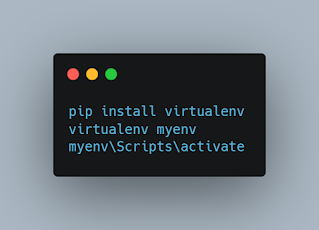In the rapidly evolving landscape of technology, software programming remains a highly sought-after skill. Whether you aspire to become a web developer, mobile app creator, data scientist, or AI engineer, learning how to code opens up a world of opportunities. However, with the abundance of programming languages, tools, and resources available, embarking on this journey can feel daunting. Fear not, for this guide will equip you with the knowledge and strategies to navigate the realm of software programming in 2024 and beyond. Embrace the Basics: Choose Your Path Before diving into the depths of software programming, it's essential to choose your path. Consider your interests, career goals, and the demands of the industry. Are you drawn to web development, mobile app creation, data analysis, or perhaps machine learning? Each path requires a different set of skills and knowledge, so take the time to explore your options and identify your niche. Select Your Weapons: Programming Langua
Django, a high-level Python web framework, is a powerful tool for building web applications quickly and efficiently. If you're a Windows user looking to get started with Django, this step-by-step guide will walk you through the process of installing Django on your Windows PC.
1. Prerequisites:
Before you start the installation, make sure you have the following prerequisites in place:
A Windows PC with administrative rights.
Python installed (Django requires Python). You can download the latest Python installer for Windows from the official website (https://www.python.org/downloads/).
2. Create a Virtual Environment (Optional but Recommended):
It's a good practice to create a virtual environment for your Django projects to isolate dependencies. Open your command prompt and run the following commands to create and activate a virtual environment:
Replace myenv with the name you want to give to your virtual environment.
3. Install Django:
With your virtual environment active, you can install Django using pip, Python's package manager. Run the following command:
4. Verify the Installation:
To check if Django was installed successfully, run the following command:
This should display the installed Django version.
5. Create a Django Project:
Now, you can create your first Django project. Navigate to the directory where you want to create your project and run:
Replace myproject with the name of your project.
6. Run the Development Server:
Change into the project directory:
You can start the development server by running the following command:
This will start the development server, and you can access your project at http://127.0.0.1:8000/ in your web browser.
7. Create a Django App (Optional):
To add functionality to your project, you can create a Django app. Navigate to your project directory and run:
Replace myapp with the name of your app.
8. Migrate the Database:
Before you can use the database, run the following command to apply migrations:
9. Start Building:
With Django installed and your project set up, you're ready to start building web applications. You can now define models, views, templates, and URLs as per your project's requirements.
Congratulations! You've successfully installed Django on your Windows PC and are well on your way to creating powerful web applications. Dive into the Django documentation to explore the framework's capabilities and begin building your projects. Happy coding!


.png)
.png)
.png)
.png)
.png)
.png)
.png)
Comments
Post a Comment